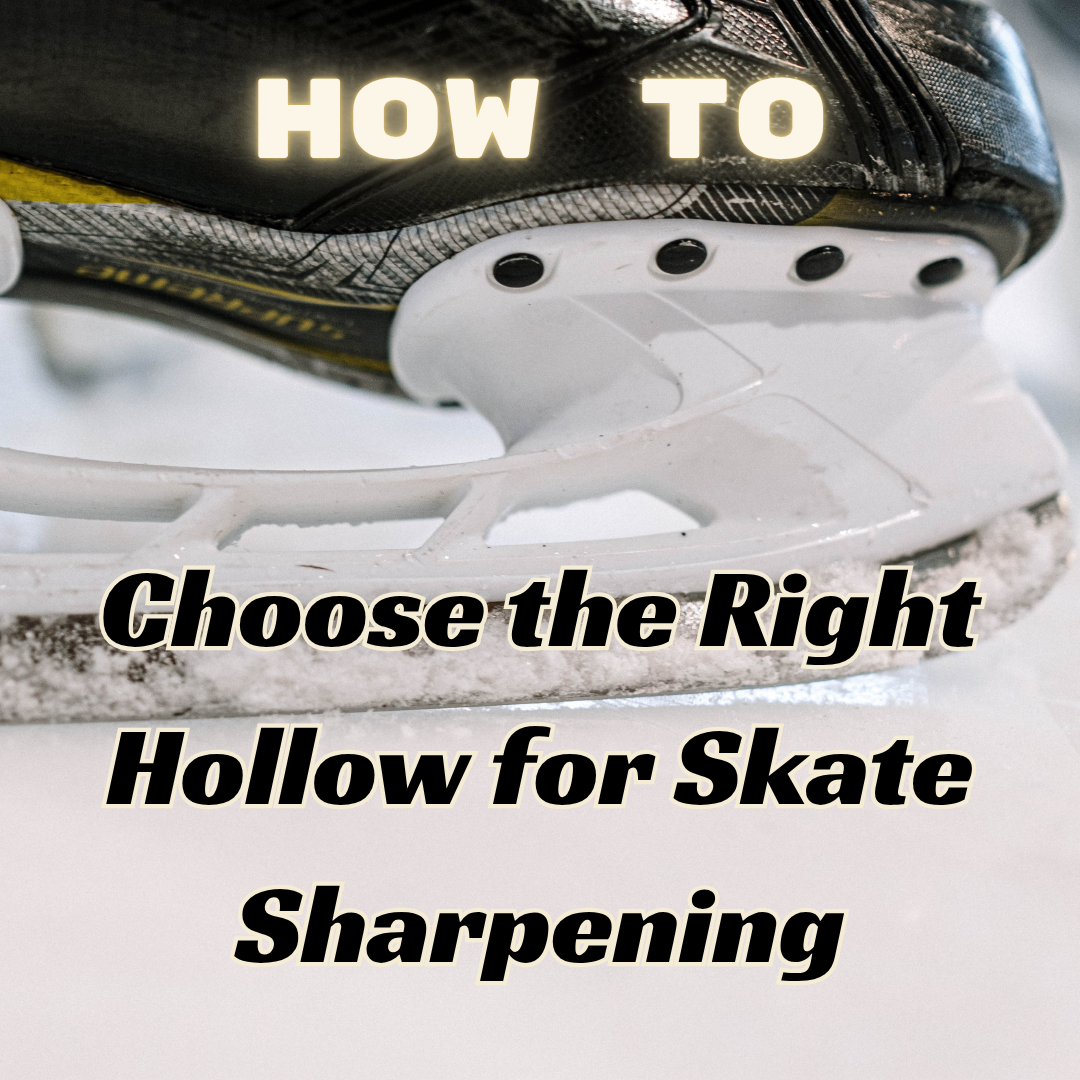If you play hockey or figure skate regularly, you already know that sharp skates can make or break your performance. But beyond just “getting your skates sharpened,” one of the most important decisions you’ll make is choosing the right hollow—the depth of the groove ground into the bottom of your skate blade.
The hollow affects your grip, glide, stopping power, and overall feel on the ice. Here’s a clear and simple breakdown to help you choose the best hollow for your game, style, and level.
What Is a Hollow?
The hollow refers to the concave groove ground into the bottom of your skate blade. When you sharpen skates, you’re not just making them sharp—you’re creating two edges, one on each side of the groove.
The depth of this groove is measured in inches (e.g. 1/2", 5/8", 3/8"). The smaller the number, the deeper the hollow, which gives more edge bite. The larger the number, the shallower the hollow, which gives more glide.
Deeper vs. Shallower Hollows: What’s the Difference?
| Hollow Radius | Depth | Grip/Bite | Glide/Speed | Common For |
|---|---|---|---|---|
| 3/8" | Deep | Very high | Low | Youth, goalies wanting extra bite, players needing tight turns |
| 1/2" | Deep | High | Moderate | Common choice for hockey players |
| 5/8" | Medium | Balanced | Higher glide | Adult rec leagues, experienced players |
| 3/4" | Shallow | Moderate | High | Speed-focused skaters, figure skaters |
| 1" | Very shallow | Low | Very high | Pros, elite skaters, or players who prefer max glide |
How to Choose the Right Hollow for You
1. Your Weight and Strength Matter
-
Lighter players or kids often benefit from deeper hollows (like 3/8" or 1/2") to help them dig into the ice.
-
Heavier or stronger skaters can use shallower hollows (5/8" or 3/4") because they generate enough bite naturally.
2. Your Playing Style
-
Agile players who rely on tight turns and quick stops may prefer a deeper hollow (e.g. 1/2", 7/16").
-
Power skaters and those who prioritize straight-line speed often go with a shallower hollow (e.g. 5/8", 3/4").
3. Ice Conditions
-
Soft ice (common in warmer rinks or practice facilities) grips more—so you might go shallower for more glide.
-
Hard ice (in colder, well-maintained rinks) is slicker—so you may want a deeper hollow for better control.
4. Your Level of Play
-
Beginners or casual players might feel more stable with a deeper hollow.
-
Advanced players often experiment with different hollows to fine-tune their performance.
Popular Hollow Choices by Skater Type
-
Youth hockey players: 3/8", 7/16", or 1/2"
-
Recreational adult players: 1/2" or 5/8"
-
Competitive hockey players: 1/2", 9/16", or 5/8" (depending on preference)
-
Figure skaters: Typically use 7/16"–7/8" hollows
-
Goalies: Often use a shallower hollow like 3/4" or flat-bottom profiles for better glide in the crease
What About FBV or Flat-Bottom Sharpening?
Sparx and other brands offer FBV (Flat Bottom V) sharpening, which uses a flat groove with sharp edges. It’s designed to give the grip of a deep hollow with the glide of a shallow one—ideal for advanced players or those wanting more speed without sacrificing bite.
Final Thoughts: Don’t Be Afraid to Experiment
Choosing the right hollow is a personal decision—what works for one skater may not work for another. Try different hollows over time to feel what gives you the best balance of bite and glide. And always work with a trusted shop that understands the nuances of sharpening.
Quick Recap:
-
Deeper hollow = more grip, less glide (good for control and tight turns)
-
Shallower hollow = more glide, less grip (good for speed and smooth movement)
-
1/2" and 5/8" are the most common hollows for hockey players
-
Factors like weight, ice conditions, and experience all matter
Need help deciding what hollow to start with? A great place to begin is 1/2" for hockey players or 5/8" for adult rec skaters, then adjust based on feel.
Still have questions? Stop in to Sports Plus today!

